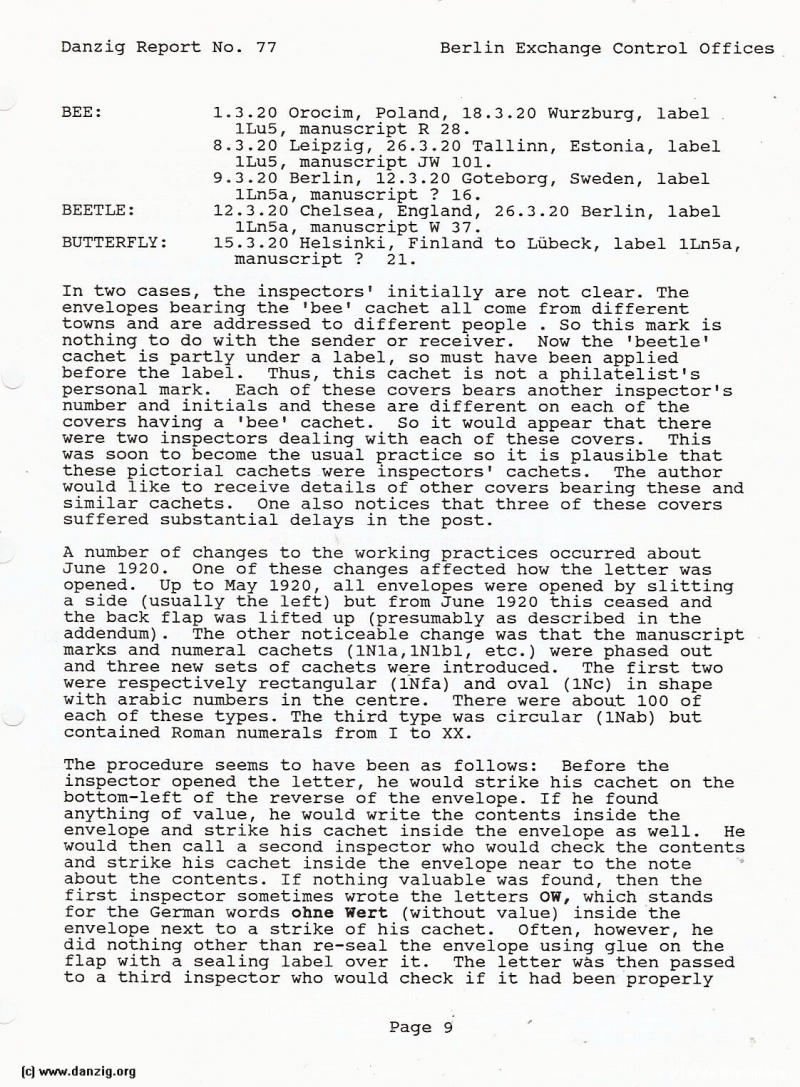
In two cases, the inspectors’ initially are not clear. The envelopes bearing the ‘bee’ cachet all come from different towns and are addressed to different people . So this mark is nothing to do with the sender or receiver. Now the ‘beetle’ cachet is partly under a label, so must have been applied before the label. Thus, this cachet is not a philatelist’s personal mark. Each of these covers bears another inspector’s number and initials and these are different on each of the covers having a ‘bee’ cachet. So it would appear that there were two inspectors dealing with each of these covers. This was soon to become the usual practice so it is plausible that these pictorial cachets were inspectors’ cachets. The author would like to receive details of other covers bearing these and similar cachets. One also notices that three of these covers suffered substantial delays in the post.
A number of changes to the working practices occurred about June 1920. One of these changes affected how the letter was opened. Up to May 1920, all envelopes were opened by slitting a side (usually the left) but from June 1920 this ceased and the back flap was lifted up (presumably as described in the addendum). The other noticeable change was that the manuscript marks and numeral cachets (lNla,lNlbl, etc.) were phased out and three new sets of cachets were introduced. The first two were respectively rectangular (lNfa) and oval (iNc) in shape with arabic numbers in the centre. There were about 100 of each of these types. The third type was circular (lNab) but contained Roman numerals from I to XX.
The procedure seems to have been as follows: Before the inspector opened the letter, he would strike his cachet on the bottom—left of the reverse of the envelope. If he found
anything of value, he would write the contents inside the envelope and strike his cachet inside the envelope as well. He would then call a second inspector who would check the contents and strike his cachet inside the envelope near to the note about the contents. If nothing valuable was found, then the first inspector sometimes wrote the letters OW, which stands for the German words ohue Wert (without value) inside the envelope next to a strike of his cachet. Often, however, he did nothing other than re-seal the envelope using glue on the flap with a sealing label over it. The letter ws then passed to a third inspector who would check if it had been properly
Danzig Report Vol. 1 - Nr. 77 - October - November - December - 1992, Page 9.
Hits: 4028
Added: 03/07/2015
Copyright: 2025 Danzig.org

